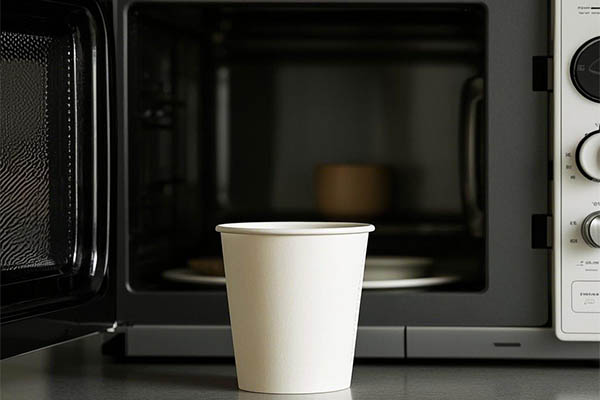The short answer is: It depends. While some paper cups are designed to withstand microwave heating, most conventional disposable paper cups are not inherently microwave-safe. The safety hinges on materials, manufacturing processes, and industry certifications—factors tightly controlled by modern paper cup machines. Let’s unravel why this question matters for both consumers and manufacturers, and how innovation in cup production is reshaping the boundaries of convenience.
Not all paper cups are created equal. Traditional disposable paper cups are typically lined with a thin layer of polyethylene (PE) or polylactic acid (PLA) to prevent liquid leakage. While these coatings are effective for holding hot or cold beverages, their microwave compatibility depends on two factors:
Material Composition: PE has a melting point of around 100–130°C (212–266°F), while PLA (a biodegradable alternative) softens at lower temperatures (~60°C/140°F). Microwaves can generate localized high heat, potentially degrading these linings and releasing harmful chemicals.
Ink and Adhesives: Printed designs or glued components may contain non-microwave-safe chemicals that pose health risks when heated.
For a paper cup to be deemed microwave-safe, it must use FDA-approved coatings (e.g., specific food-grade polymers) and avoid volatile inks or adhesives. Manufacturers often label such products with “Microwave Safe” symbols or certifications like LFGB or FDA 21 CFR.

The safety and functionality of microwave-friendly paper cups are heavily influenced by the paper cup manufacturing process. Modern paper cup machines play a pivotal role in ensuring compliance with stringent standards. Here’s how:
Precision Coating Technology
Advanced machines apply ultra-thin, uniform layers of microwave-safe coatings (e.g., water-based barriers or specialized polymers). This minimizes the risk of hotspots during microwave use while maintaining structural integrity.
Temperature-Resistant Material Handling
High-speed paper cup machines can process heat-resistant base papers and biodegradable PLA linings without compromising production efficiency.
Quality Control Integration
Automated systems detect defects in coatings or seams, ensuring every cup meets microwave safety criteria.
For businesses, investing in state-of-the-art paper cup making machines isn’t just about productivity—it’s about aligning with evolving consumer demands for safe, sustainable packaging.
If you’re unsure whether a paper cup is microwave-safe, follow these guidelines:
1. Check for explicit “Microwave Safe” labeling or certifications.
2. Avoid cups with metallic accents, glossy prints, or wax coatings.
3. When in doubt, transfer contents to a glass or ceramic container.
As the push for eco-friendly packaging grows, manufacturers are leveraging paper cup machines to innovate. For example:
PLA-lined cups: Compostable and microwave-stable when engineered correctly.
Dual-purpose designs: Cups that withstand both high-heat beverages and microwave reheating.
These advancements highlight the synergy between manufacturing technology and consumer needs, positioning microwave-safe paper cups as a viable solution for foodservice and retail sectors.
The question “Can you put paper cups in the microwave?” ultimately depends on material science and manufacturing precision. With cutting-edge paper cup machines, producers can deliver products that balance convenience, safety, and sustainability. For consumers, vigilance in selecting certified microwave-safe options is key. As technology evolves, the future of disposable packaging looks both smarter and greener.
By understanding the interplay between materials, machinery, and standards, businesses and users can make informed decisions—one cup at a time.
Ruida specializes in high-performance paper cup machines designed for producing microwave-safe, eco-friendly disposable products. Contact us to explore customized solutions for your packaging needs.